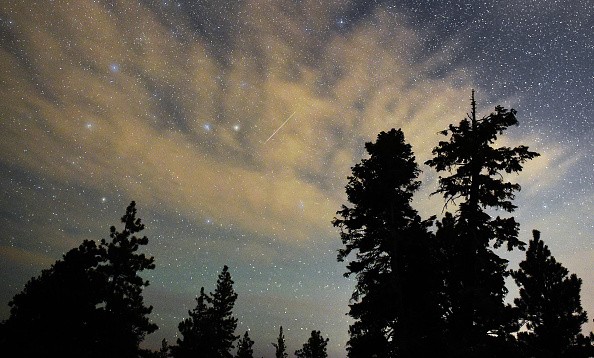Chinese scientists announced on Thursday they have looked into the debris of three giant meteorites to learn more about the world's largest meteorite field in Altay, Xinjiang Uyghur Autonomous Region.
Scientists with the Purple Mountain Observatory in Nanjing told the state-owned Xinhua News Agency the meteorites came from the same parent asteroid, as their chemical compositions are identical.
The earliest dated discovery of the extraterrestrial objects was in 1898, when herdsmen from the neighboring Gobi Desert found a 28-tonne silvery stone shaped like a camel. The stone was later named Armanty and has been confirmed by the Meteoritical Society as the world's fourth-largest meteorite.
Another stone was also found in the region more than a hundred years later, which weighed 430 kg and was named Ulasitai.
It was not until 2011 when a third one, "Wuxilike," weighing 5 tonnes was discovered that researchers began to notice that the three meteorites were in a line, although across a considerable distance of 425 km.
"They are on the same axis from southeast to northwest, which piqued our interest," Xu Weibiao, meteorite curator with the observatory under the Chinese Academy of Sciences (CAS), told Xinhua.
Xu, one of the chief scientists conducting mineralogical research over the meteorites, said the meteorites were composed of the same chemical components and microelements. Several smaller meteorites have also been found nearby with the same chemical makeup as the larger rocks.
"This suggests that the meteorites were all from the same parent asteroid before it separated as it entered the Earth' atmosphere," said Xu.
Based on the 425-km strewn length of the Altay field, its meteor shower is likely to be the biggest on earth. The current record-holder for the world's largest meteorite field was Gibeon, Namibia, with a long axis of 275 km.
However, there is no historical documentation of the incident at Altay, leading scientists to speculate that it might have occurred in prehistoric times.
"A meteor shower of such a scale must have had a great impact on the Earth. If it happened after humans walked the earth, we often find cave painting depicting the incident in the area," said Xu.
He said the research team used isotopic dating technology to determine when the meteor shower occurred.
An average of 20,000 meteorites falls to the Earth annually. Scientists use these extraterrestrial stones to find out more information about the universe and potential signs of life in space through chemical composition.



























